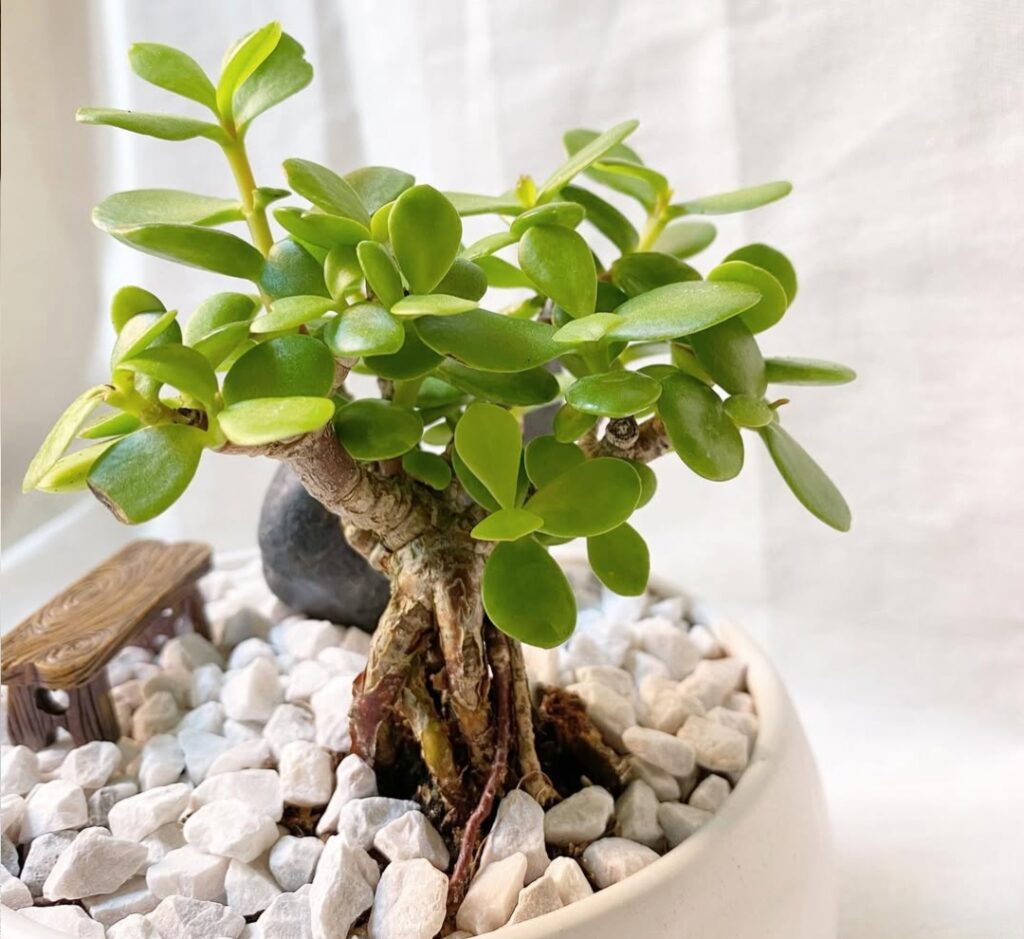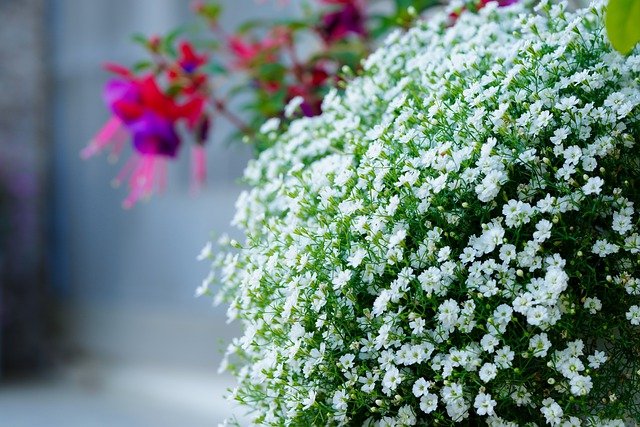A steamy, humid bathroom can feel like a tropical jungle—and that’s exactly why certain plants thrive in this environment. But did you know that some plants don’t just survive in humidity; they actively absorb moisture from the air? These natural dehumidifiers can help reduce dampness, prevent mold growth, and keep your bathroom fresh and inviting.
That’s where bathroom plants that absorb moisture come in! These humidity-loving plants thrive in steamy conditions, pulling excess moisture from the air and improving indoor air quality. Not only do they help prevent mold growth, but they also bring a fresh, spa-like ambiance to your space. From lush ferns to air-purifying peace lilies, the right plants can transform your bathroom into a healthier, greener oasis.
Whether you have a windowless bathroom or one flooded with natural light, there’s a perfect plant for you. Let’s dive in and discover the best plants to keep your bathroom fresh, clean, and beautifully green!
- 1 1. Boston Fern (Nephrolepis exaltata)
- 2 2. Peace Lily (Spathiphyllum)
- 3 3. English Ivy (Hedera helix)
- 4 4. Aloe Vera (Aloe barbadensis miller)
- 5 5. Spider Plant (Chlorophytum comosum)
- 6 6. Bamboo Palm (Chamaedorea seifrizii)
- 7 7. Orchid (Phalaenopsis)
- 8 8. Snake Plant (Sansevieria trifasciata)
- 9 9. Tillandsia (Air Plants)
- 10 10. Golden Pothos (Epipremnum aureum)
- 11 FAQs: Bathroom Plants That Absorb Moisture
Timetable: Benefits of Moisture-Absorbing Plants
| Time of Day | Benefit | Impact on Bathroom |
|---|---|---|
| Morning | Absorb humidity after showers/baths | Reduces dampness, prevents condensation |
| Midday | Improve air circulation | Keeps the air fresh and prevents stuffiness |
| Afternoon | Minimize mold and mildew growth | Lowers the risk of black spots and musty odors |
| Evening | Maintain balanced moisture levels | Prevents excess humidity buildup overnight |
| Overnight | Release oxygen and filter toxins | Enhances air quality while you sleep |
1. Boston Fern (Nephrolepis exaltata)

Boston Fern (Nephrolepis exaltata) is a lush, feathery plant known for its ability to absorb moisture and purify the air. Thriving in humid environments, it helps regulate indoor humidity, making it an excellent choice for bathrooms. This fern likes high humidity, continuously moist soil, and indirect light. Its vibrant green fronds add a refreshing touch, enhancing both aesthetics and air quality in any space.
Plants that are excellent at absorbing humidity include Boston ferns.They thrive in warm, damp environments and help purify the air by filtering toxins.
Care Tips:
Light: Indirect sunlight or fluorescent lighting
Water: Maintain a damp but not soggy soil.
Humidity Needs: High (perfect for bathrooms!)
2. Peace Lily (Spathiphyllum)

Peace Lily (Spathiphyllum) is a popular, low-maintenance plant that thrives in humid environments while actively absorbing moisture from the air.Additionally, it eliminates pollutants like formaldehyde and benzene from indoor air. With its elegant white blooms and lush green leaves, it adds beauty to any space. Peace lilies prefer indirect light, consistently moist soil, and can help reduce mold growth in bathrooms.
Not only does the peace lily absorb moisture, but it also purifies the air by removing pollutants like benzene and formaldehyde.
Care Tips:
Light: Low to medium indirect light
Water: Water when the soil feels dry
Bonus: Helps prevent mold growth!
3. English Ivy (Hedera helix)

English Ivy (Hedera helix) is a versatile, trailing plant known for its ability to absorb moisture and filter airborne mold spores. Ideal for humid environments, it helps reduce excess humidity while improving air quality. Its cascading vines make it perfect for hanging baskets or shelves in bathrooms. English Ivy thrives in bright, indirect light, requires slightly moist soil, and adds a touch of elegance to any space.
This elegant trailing plant is a powerhouse at absorbing moisture and eliminating airborne mold spores. English ivy is excellent for small bathrooms as it can be hung from a shelf or in a hanging basket.
Care Tips:
Light: Bright, indirect light
Water: Keep the soil slightly damp
Air-Purifying: Removes mold and airborne bacteria
4. Aloe Vera (Aloe barbadensis miller)

Aloe Vera (Aloe barbadensis miller) is a hardy, moisture-absorbing plant known for its air-purifying and medicinal properties. It thrives in humid environments, making it an excellent choice for bathrooms. This succulent requires bright, indirect light and minimal watering, as its thick leaves store moisture. Beyond humidity control, Aloe Vera’s soothing gel can be used to treat burns, cuts, and skin irritation, adding both beauty and functionality.
While aloe vera is famous for its healing properties, it’s also great at absorbing excess moisture from the air. Plus, it’s super low-maintenance!
Care Tips:
Light: Bright, indirect sunlight
Water: Use water sparingly and let the soil dry out.
Bonus: Soothes burns and skin irritation
5. Spider Plant (Chlorophytum comosum)

Spider Plant (Chlorophytum comosum) is a resilient, moisture-absorbing plant that thrives in humid environments, making it perfect for bathrooms. It effectively removes excess moisture and airborne toxins, improving air quality. With its arching green-and-white striped leaves and baby plantlets, it adds a decorative touch. Spider plants prefer indirect light, slightly moist soil, and adapt well to various conditions, making them an excellent low-maintenance choice.
A tough, adaptable plant, the spider plant is fantastic at absorbing moisture and filtering indoor air pollutants. It also produces “baby” plants, which you can propagate easily.
Care Tips:
Light: Indirect light or artificial lighting
Water: Water weekly, allowing the topsoil to dry
Non-Toxic: Safe for pets!
6. Bamboo Palm (Chamaedorea seifrizii)

Bamboo Palm (Chamaedorea seifrizii) is a tropical, moisture-absorbing plant that thrives in humid environments, making it perfect for bathrooms. Its feathery, arching fronds help regulate humidity while filtering indoor air pollutants like formaldehyde. This elegant palm prefers low to bright indirect light, consistently moist soil, and warm temperatures. With its lush greenery and air-purifying qualities, Bamboo Palm adds a refreshing, spa-like ambiance to any space.
Bamboo palms add a tropical touch while reducing humidity and filtering toxins like formaldehyde. Their lush foliage makes them a gorgeous choice for any bathroom.
Care Tips:
Light: Low to bright indirect light
Water: Keep the soil consistently moist
Humidity-Loving: Thrives in steamy bathrooms
7. Orchid (Phalaenopsis)

Orchid (Phalaenopsis) is a stunning, moisture-absorbing plant that thrives in humid environments, making it an excellent choice for bathrooms. Its thick leaves and aerial roots naturally absorb moisture from the air, helping to regulate humidity. This elegant orchid prefers bright, indirect light, occasional watering, and good airflow. With its exotic blooms and low-maintenance care, Phalaenopsis adds a touch of beauty and sophistication to any space
Orchids absorb moisture through their leaves and roots, making them a stunning and practical addition to your bathroom.
Care Tips:
Light: Bright, indirect sunlight
Water: Water sparingly (once a week)
Aesthetic Appeal: Adds an exotic, elegant touch
8. Snake Plant (Sansevieria trifasciata)

Snake Plant (Sansevieria trifasciata) is a hardy, moisture-absorbing plant perfect for bathrooms. It thrives in humid conditions while also filtering toxins like formaldehyde and benzene from the air. With its striking, upright leaves, it adds a modern touch to any space. This low-maintenance plant prefers low to bright indirect light and requires minimal watering, making it an excellent choice for beginners and busy plant owners.
Snake plants are nearly indestructible and thrive in humid conditions while absorbing excess moisture. Additionally, they improve the quality of the air at night by releasing oxygen.
Care Tips:
Light: Low to bright indirect light
Water: Water once every 2-3 weeks
Low Maintenance: Perfect for beginners
9. Tillandsia (Air Plants)

Tillandsia (Air Plants) are unique, soil-free plants that absorb moisture and nutrients directly from the air, making them perfect for humid bathrooms. Their ability to thrive in high humidity helps reduce excess moisture and improve air quality. These low-maintenance plants require bright, indirect light and occasional misting. With their versatile, sculptural appearance, air plants can be displayed in hanging glass terrariums or mounted on decorative surfaces.
Air plants don’t need soil to grow; they absorb moisture and nutrients directly from the air, making them perfect for bathrooms with high humidity.
Care Tips:
Light: Bright, indirect sunlight
Water: Mist 2-3 times per week
Unique Feature: Can be mounted on walls or placed in glass terrariums
10. Golden Pothos (Epipremnum aureum)

Golden Pothos (Epipremnum aureum) is a hardy, moisture-absorbing plant that thrives in humid environments, making it ideal for bathrooms. Its trailing vines and heart-shaped leaves not only enhance décor but also help regulate indoor humidity while purifying the air. Golden Pothos adapts to low-light conditions, requires occasional watering, and is easy to maintain. Because of its tumbling growth, it’s ideal for hanging shelves or baskets.
Golden pothos is one of the easiest plants to grow and absorbs moisture efficiently, helping reduce bathroom humidity. Its cascading vines look beautiful on shelves or in hanging pots.
Care Tips:
Light: Low to bright indirect light
Water: Water when the soil dries out
Air-Purifying: gets rid of pollutants like carbon monoxide and formaldehyde.
How to Arrange Plants in Your Bathroom
To maximize their benefits, place your plants strategically:
✅ Hanging baskets: Perfect for ivy, pothos, and air plants
✅ Shelves or counters: Great for ferns, peace lilies, and orchids
✅ Windowsills: Ideal for aloe vera and snake plants
Bringing plants into your bathroom isn’t just about aesthetics—it’s a smart way to control humidity, improve air quality, and create a relaxing spa-like atmosphere. Whether you choose a low-maintenance snake plant or an elegant orchid, each of these moisture-absorbing plants will contribute to a fresher, healthier space.
FAQs: Bathroom Plants That Absorb Moisture
What are the best bathroom plants that absorb moisture?
The best bathroom plants that absorb moisture include Boston ferns, peace lilies, spider plants, snake plants, and bamboo palms. These plants naturally thrive in humid environments and help prevent mold and mildew.
How do bathroom plants that absorb moisture help with humidity?
Bathroom plants that absorb moisture take in excess humidity through their leaves and roots, balancing the air moisture levels. This helps reduce dampness, making your bathroom feel fresher and preventing excess condensation.
Can bathroom plants that absorb moisture reduce mold growth?
Yes, bathroom plants that absorb moisture can significantly reduce mold growth by lowering humidity levels. Plants like English ivy and peace lilies have air-purifying properties that can help prevent mold spores from spreading.
Which bathroom plants that absorb moisture require low maintenance?
If you want bathroom plants that absorb moisture with minimal care, go for snake plants, pothos, or ZZ plants. These require little watering and thrive in low-light conditions, making them ideal for bathrooms.
Do bathroom plants that absorb moisture need sunlight?
Most bathroom plants that absorb moisture prefer indirect light, but some, like bamboo palms and ferns, can tolerate low-light conditions.If there isn’t enough natural light in your bathroom, think about installing artificial grow lights.
Can bathroom plants that absorb moisture improve air quality?
Absolutely! Bathroom plants that absorb moisture not only control humidity but also filter toxins from the air. Peace lilies, Boston ferns, and snake plants are excellent choices for improving indoor air quality.
How often should I water bathroom plants that absorb moisture?
The watering needs of bathroom plants that absorb moisture vary. Since they absorb humidity, they require less frequent watering. Check the soil moisture and only water when the top layer feels dry.
Do bathroom plants that absorb moisture attract pests?
Not usually, but some bathroom plants that absorb moisture may attract fungus gnats if overwatered. To prevent this, allow the soil to dry slightly between waterings and ensure good airflow.
Can I keep bathroom plants that absorb moisture in a windowless bathroom?
Yes, some bathroom plants that absorb moisture can survive in a windowless bathroom. Consider using low-light plants like ZZ plants, peace lilies, and ferns, or add LED grow lights for better growth.
What size bathroom plants that absorb moisture should I get?
Choose bathroom plants that absorb moisture based on your space. Small plants like air plants or ferns fit on shelves, while larger ones like bamboo palms can stand in a corner to absorb more moisture.
Do bathroom plants that absorb moisture need special pots?
Using well-draining pots is ideal for bathroom plants that absorb moisture to prevent root rot. Hanging planters, ceramic pots, and self-watering pots are good choices for humid environments.
What is the easiest bathroom plant that absorbs moisture?
The easiest bathroom plants that absorb moisture include spider plants, pothos, and snake plants. These require little maintenance, tolerate humidity well, and adapt to various light conditions.
Can I place bathroom plants that absorb moisture near a shower?
Yes! Many bathroom plants that absorb moisture, such as ferns, orchids, and bamboo palms, thrive near showers where humidity levels are high. Just ensure they have proper drainage to prevent overwatering
How do I care for bathroom plants that absorb moisture in winter?
During winter, bathroom plants that absorb moisture may need less watering due to reduced humidity. Keep them away from cold drafts and ensure they still receive some indirect light to stay healthy.
Why Choose Moisture-Absorbing Plants for Your Bathroom?
Bathrooms often struggle with excess moisture, leading to mold, mildew, and poor air quality. Plants that absorb humidity can help by
Reducing dampness naturally
Improving air circulation
Minimizing mold and mildew growth
Enhancing bathroom aesthetics with lush greenery




